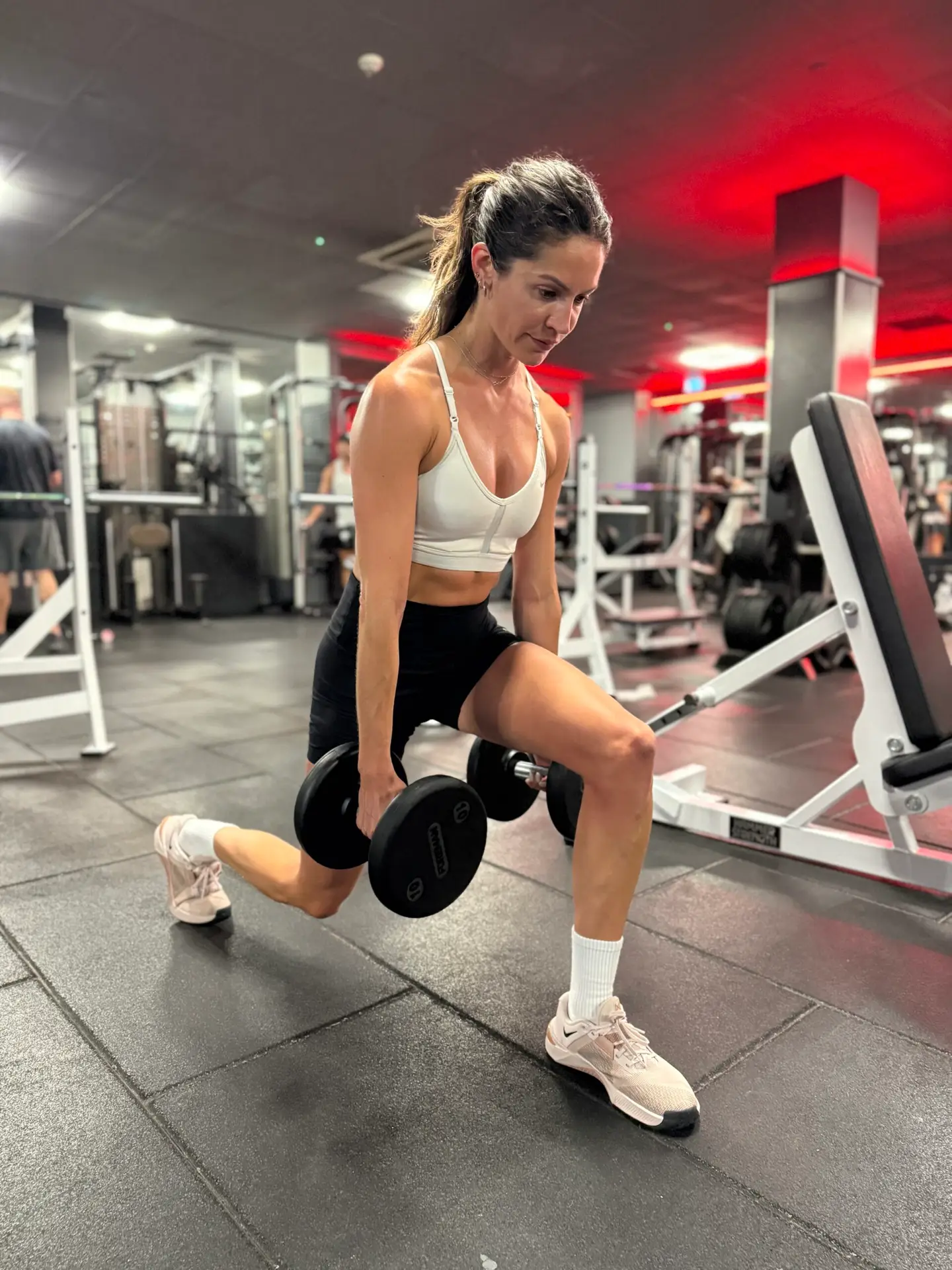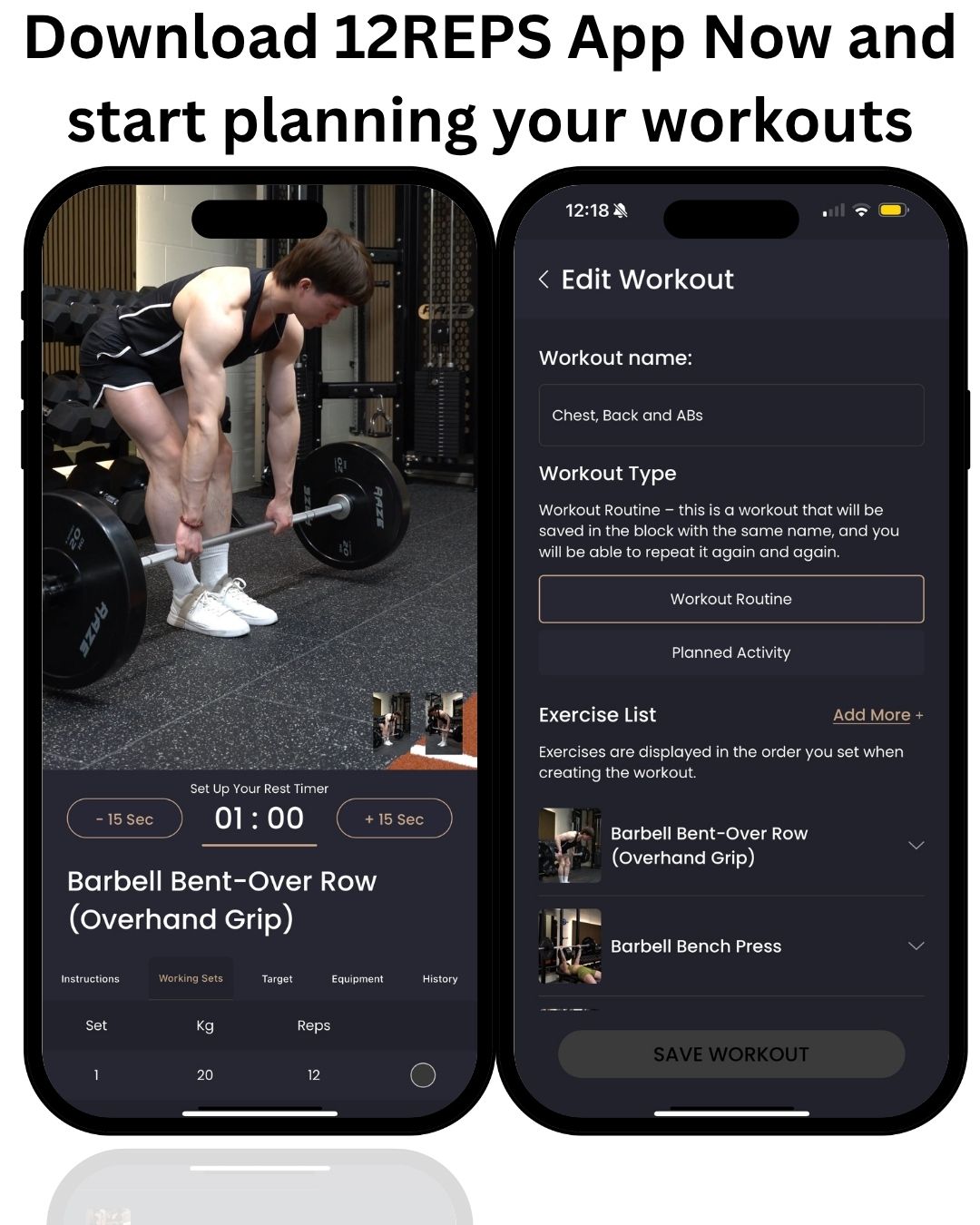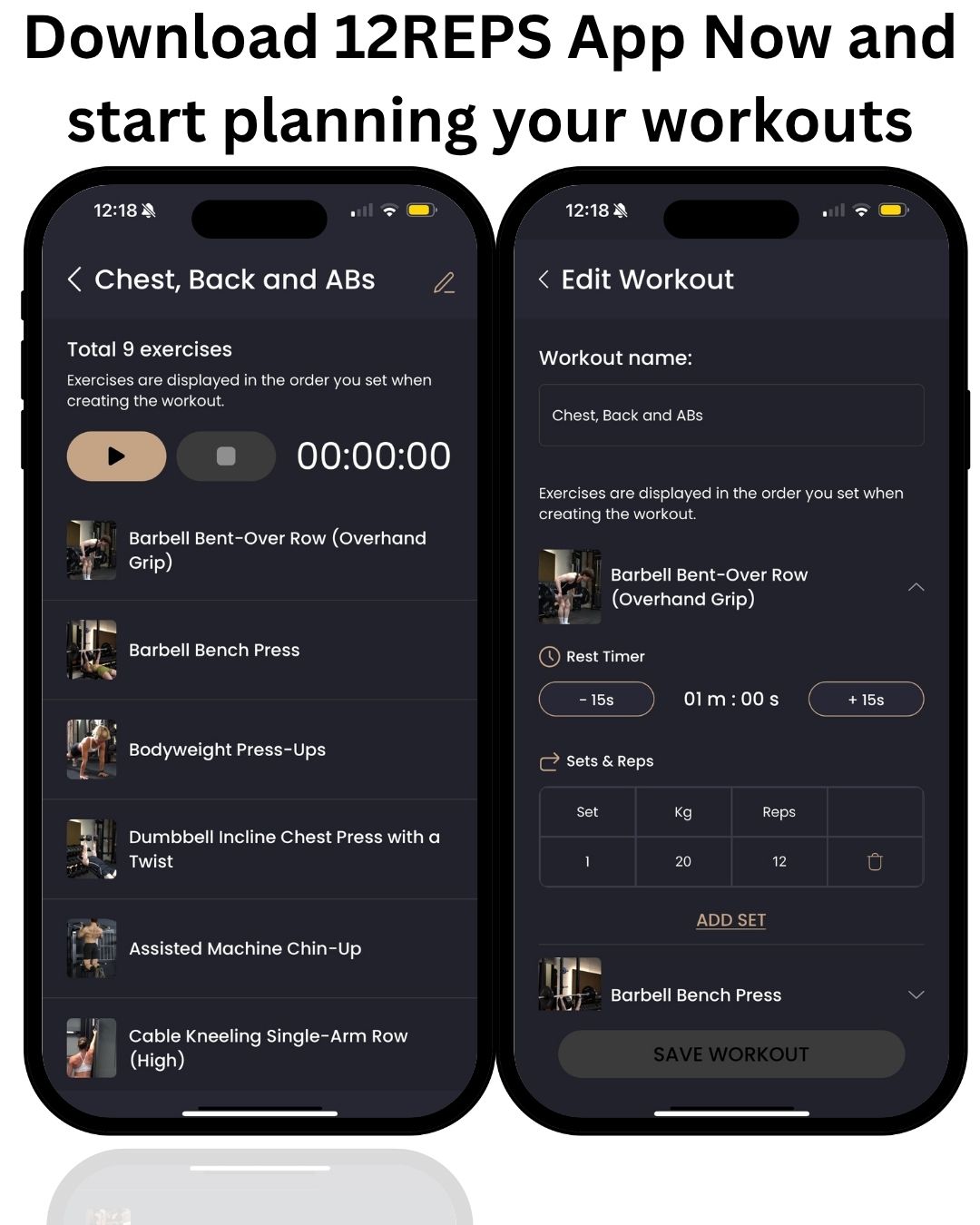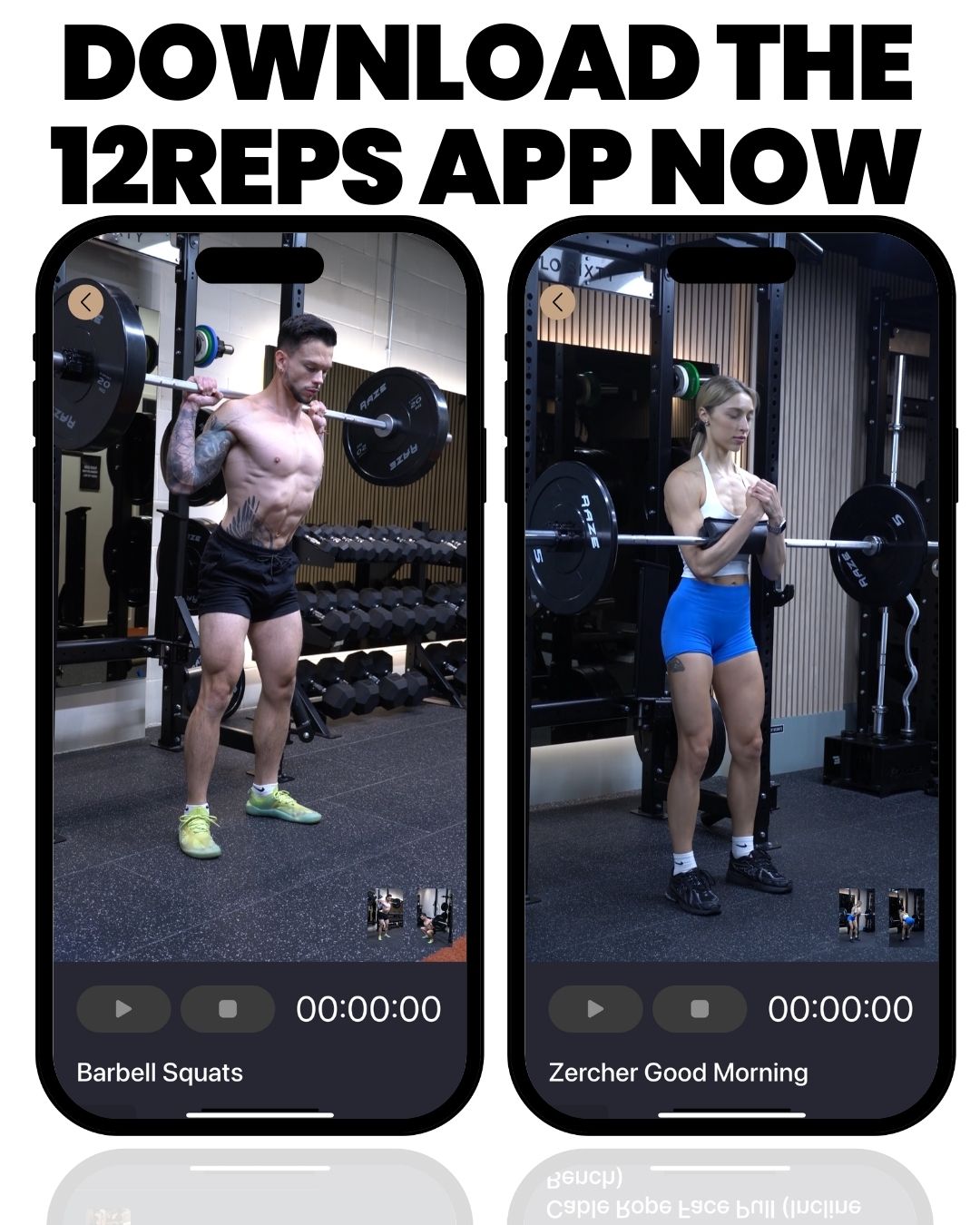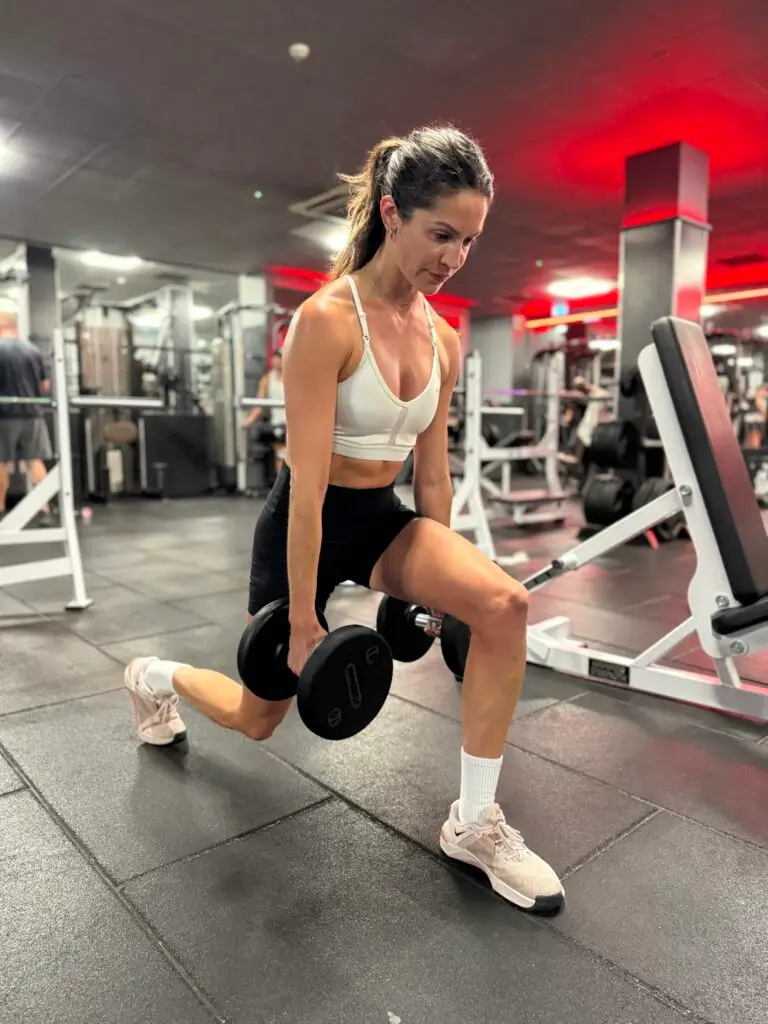By Will Duru, BSc (Hons) Sport and Exercise Science, Award-winning Personal Trainer with over 10 years of experience in strength training and optimising recovery
As a personal trainer with over a decade of experience, I’ve observed a common trend among women new to strength training: a focus on cardio and light, high-repetition exercises. While any movement is beneficial, this approach often overlooks the incredible potential of building real strength, especially in the lower body. Your glutes, hamstrings, and quads are the powerhouse of your body, and training them effectively with dumbbells can unlock a new level of fitness, confidence, and overall health.
In this article, I’ll guide you through a powerful dumbbell-only lower body workout designed specifically for women. We’ll focus on compound movements that deliver maximum results, helping you build muscle, burn fat, and sculpt a stronger, more defined physique. I’ll also show you how using a strength training app like the 12-rep app can revolutionise your training, keeping you on track and motivated.
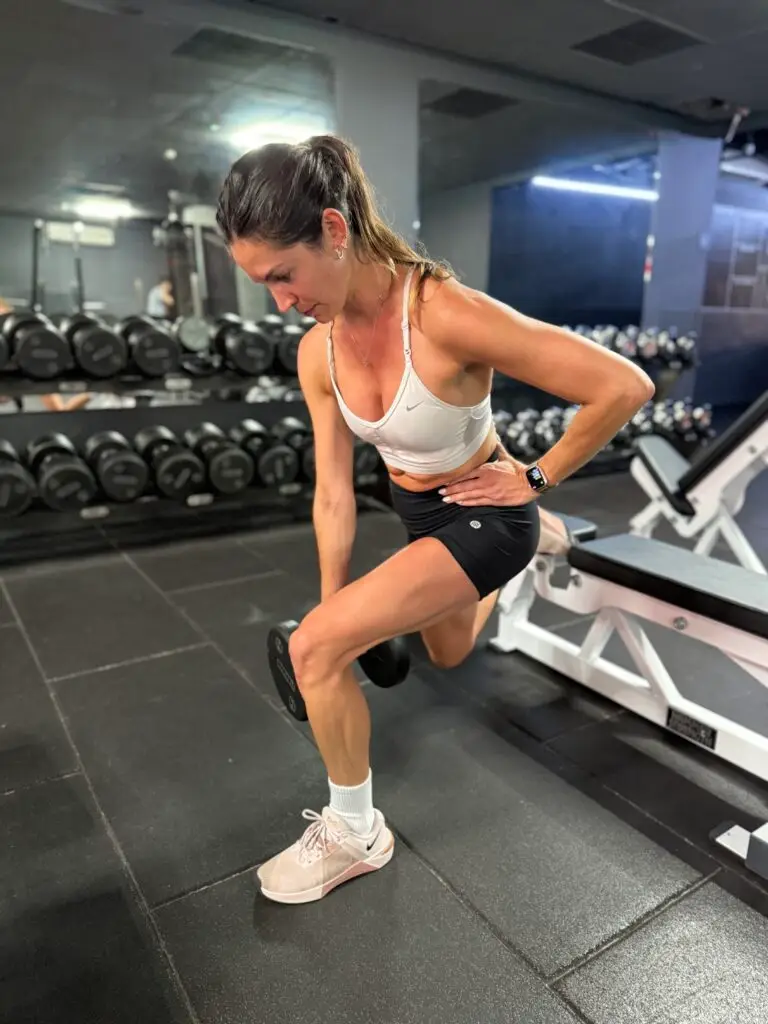
Why Lower Body Strength Training Matters for Women
Lower body strength training is absolutely crucial for women, yet it’s often overlooked in favor of upper body work or endless cardio sessions. The truth is, your lower body contains some of the largest muscle groups in your body, your glutes, quadriceps, and hamstrings. These muscles are responsible for nearly every movement you make throughout the day, from getting out of bed to climbing stairs to picking up your children.
When you strengthen these muscle groups, you’re not just building an aesthetically pleasing physique; you’re investing in your long-term health and functionality. Strong glutes help prevent lower back pain, powerful quads support your knees during daily activities, and well-developed hamstrings improve your posture and athletic performance. Additionally, because these are large muscle groups, training them burns more calories both during and after your workout, making lower body training an excellent choice for women looking to improve their body composition.
Research consistently shows that women who engage in regular strength training experience improved bone density, better metabolic health, and increased confidence [1]. The lower body, being home to the largest muscles, provides the greatest return on investment when it comes to these benefits.
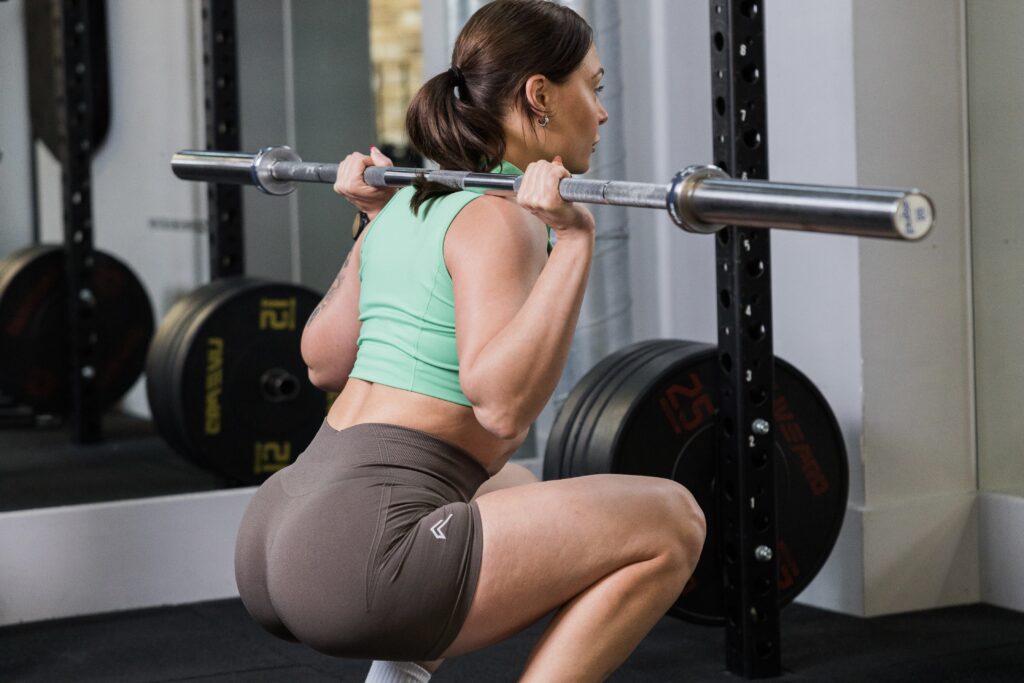
The Dumbbell Lower Body Workout
Here is a summary of the workout. Perform this workout 2-3 times per week, with at least one day of rest in between.
Exercise | Sets | Reps | Weight | Rest Period |
Dumbbell Goblet Squats | 4 | 10-12 | Challenging | 60-90 seconds |
Dumbbell RDLs | 4 | 10-12 | Moderate | 60-90 seconds |
Dumbbell Reverse Lunges | 4 | 10-12 | Moderate | 60 seconds |
Dumbbell Hip Thrusts | 4 | 10-12 | Challenging | 60-90 seconds |
Bodyweight Jump Squats | 4 | 10-12 | Bodyweight | 60 seconds |
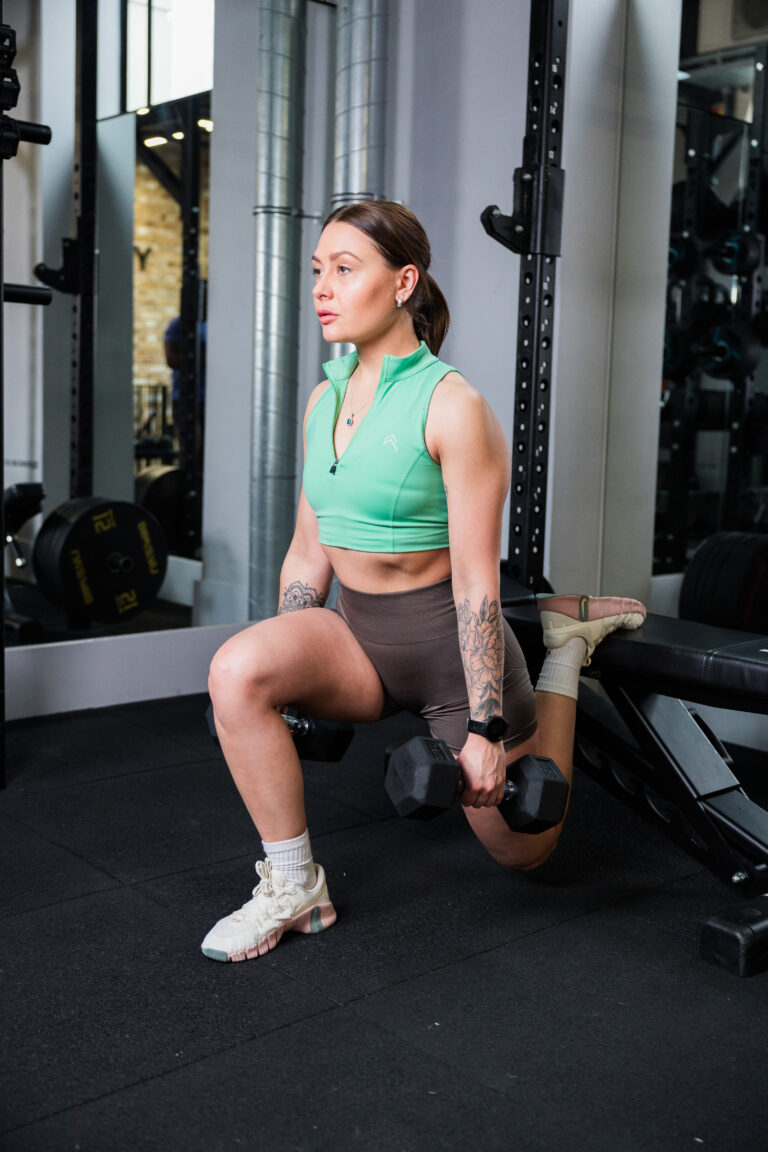
Exercise Breakdown: Mastering Each Movement
Dumbbell Goblet Squats
The goblet squat is one of my favourite exercises for teaching proper squat mechanics to women. Holding a dumbbell at chest level naturally encourages an upright torso position and helps you maintain proper form throughout the movement. This exercise primarily targets your quadriceps and glutes while also engaging your core for stability.
To perform a goblet squat, hold a dumbbell vertically against your chest with both hands cupping the top weight plate. Stand with your feet slightly wider than shoulder-width apart, toes pointed slightly outward. Initiate the movement by pushing your hips back and bending at the knees, as if you’re sitting back into a chair. Descend until your thighs are parallel to the floor, then drive through your heels to return to the starting position.
The beauty of the goblet squat lies in its accessibility. Even beginners can master this movement quickly, and it serves as an excellent foundation for more advanced squat variations. The front-loaded position also makes it easier to achieve proper depth compared to other squat variations.
Dumbbell Reverse Lunges
Reverse lunges are superior to forward lunges for most women because they’re easier on the knees and allow for better balance and control. This unilateral exercise helps address strength imbalances between legs while challenging your stability and coordination.
Hold a dumbbell in each hand at your sides. Step backwards with one leg, lowering your hips until both knees are bent at approximately 90 degrees. Your front knee should be directly above your ankle, and your back knee should hover just above the ground. Push through your front heel to return to the starting position, then repeat on the other side.
Reverse lunges are excellent for targeting the glutes and quadriceps while also engaging the core for stability. They’re also functional, mimicking movements we use in daily life and sports.
Dumbbell Romanian Deadlifts (RDLs)
The Romanian deadlift is arguably the best exercise for targeting your hamstrings and glutes while teaching the crucial hip hinge movement pattern. Many women struggle with posterior chain weakness, and the RDL directly addresses this issue while improving flexibility and strength simultaneously.
Hold a dumbbell in each hand with your arms straight, standing with feet hip-width apart. Begin the movement by pushing your hips back while maintaining a slight bend in your knees. Lower the dumbbells along your legs, feeling a stretch in your hamstrings. Once you feel a good stretch or the dumbbells reach mid-shin level, drive your hips forward to return to the starting position.
The key to a successful RDL is maintaining a neutral spine throughout the movement and really focusing on the hip hinge pattern. This exercise not only strengthens your posterior chain but also improves your posture and reduces the risk of lower back injury.
Dumbbell Hip Thrusts
The hip thrust is the king of glute exercises, and for good reason. This movement specifically targets the gluteus maximus through its full range of motion, making it incredibly effective for building strong, powerful glutes. Strong glutes are essential for athletic performance, injury prevention, and aesthetic goals.
Sit with your upper back against a bench or couch, holding a dumbbell across your hips. Plant your feet firmly on the ground, hip-width apart. Drive through your heels to lift your hips up, squeezing your glutes at the top. Your body should form a straight line from your knees to your shoulders at the top of the movement. Lower back down with control and repeat.
The hip thrust is unique because it trains the glutes in their primary function, hip extension. This makes it incredibly effective for improving athletic performance and addressing the glute weakness that plagues many women due to prolonged sitting
Bodyweight Jump Squats
Jump squats incorporate a plyometric element into your workout, enhancing power, athleticism, and cardiovascular fitness. They’re also an excellent way to finish your workout with a high-intensity movement that will leave you feeling accomplished and energised.
Start in a squat position with your feet shoulder-width apart. Lower into a squat, then explosively jump up as high as possible. Land softly back into the squat position and immediately repeat. Focus on landing quietly and maintaining good form throughout the movement.
Jump squats not only build power but also improve bone density and cardiovascular fitness. They’re a perfect example of how strength training can provide multiple benefits simultaneously.
Enhance Your Training with the 12-Rep App
Consistency and progression are the cornerstones of any successful strength training program. This is where a good workout tracker becomes an invaluable tool. While you can certainly use a pen and paper to log your workouts, a dedicated strength training app like the 12-rep app can take your training to the next level. As a muscle-building app, it’s designed to help you build muscle and lose fat by providing a structured and easy-to-follow approach to your workouts.
Here’s how the 12-rep app can enhance your training:
Structured Workouts: The app provides a clear and organised workout plan, so you know exactly what to do each day. This eliminates guesswork and ensures you’re following a program that’s designed for results. Having a structured plan is crucial for long-term success, as it takes the decision-making out of your hands and allows you to focus on execution.
Progress Tracking: The app allows you to track your sets, reps, and weight for each exercise. This data is crucial for progressive overload, which is the principle of gradually increasing the demands on your muscles to stimulate growth. The app makes it easy to see your progress over time, which is a huge motivator. When you can see concrete evidence of your improvement, it becomes much easier to stay committed to your training program.
Exercise Library: The app features a comprehensive library of exercises, accompanied by video demonstrations. This is especially helpful for ensuring you’re performing each exercise with proper form, which is essential for preventing injuries and maximising results. As someone who’s worked with hundreds of women over the years, I can’t stress enough how important proper form is for both safety and effectiveness.
Rest Timer: The app has a built-in rest timer to ensure you’re taking the appropriate amount of rest between sets. This is a small detail that can make a big difference in your workout performance. Too little rest and you won’t be able to maintain intensity; too much rest and your workout becomes inefficient.
Free Strength Training Program: The 12-rep app offers a free strength training program to get you started. This is a great way to experience the benefits of the app without any commitment. For those who prefer working out at home, there is also a bodyweight training app feature that provides effective workouts using minimal equipment.
By using a build muscle lose fat app like the 12-rep app, you’re not just working out; you’re training with purpose and precision. It’s like having a personal trainer in your pocket, guiding you every step of the way. The app helps ensure that you’re following proven principles of strength training while making the process as convenient and user-friendly as possible.
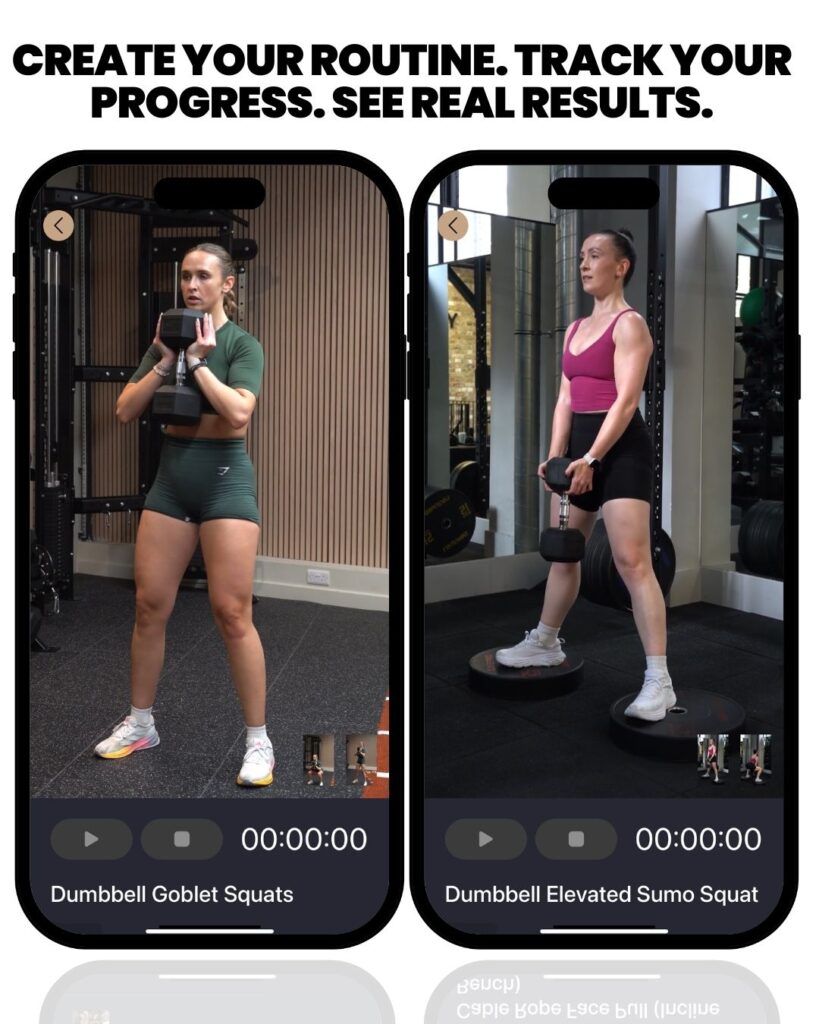
Programming and Progression
To get the most out of this workout, focus on progressive overload, gradually increasing the weight, reps, or sets over time. Start with weights that challenge you but allow you to complete all reps with good form. As you get stronger, increase the weight by 2.5-5 pounds or add an extra rep to each set.
Remember, building strength is a journey, not a destination. Be patient with yourself, focus on proper form, and trust the process. With consistency and dedication, you’ll be amazed at what your body can achieve.
References
- Duru, W. (2025, August 24). The Ultimate Women’s Lower Body Strength Training Guide. 12 REPS. https://just12reps.com/the-ultimate-womens-lower-body-strength-training-guide-build-power-confidence-and-functional-strength-at-the–gym/
- Duru, W. (2025, August 5). Women’s Lower Body Strength Training: Glutes, Quads & Hamstrings. 12 REPS. https://just12reps.com/womens-lower-body-strength-training-glutes-quads-hamstrings/

